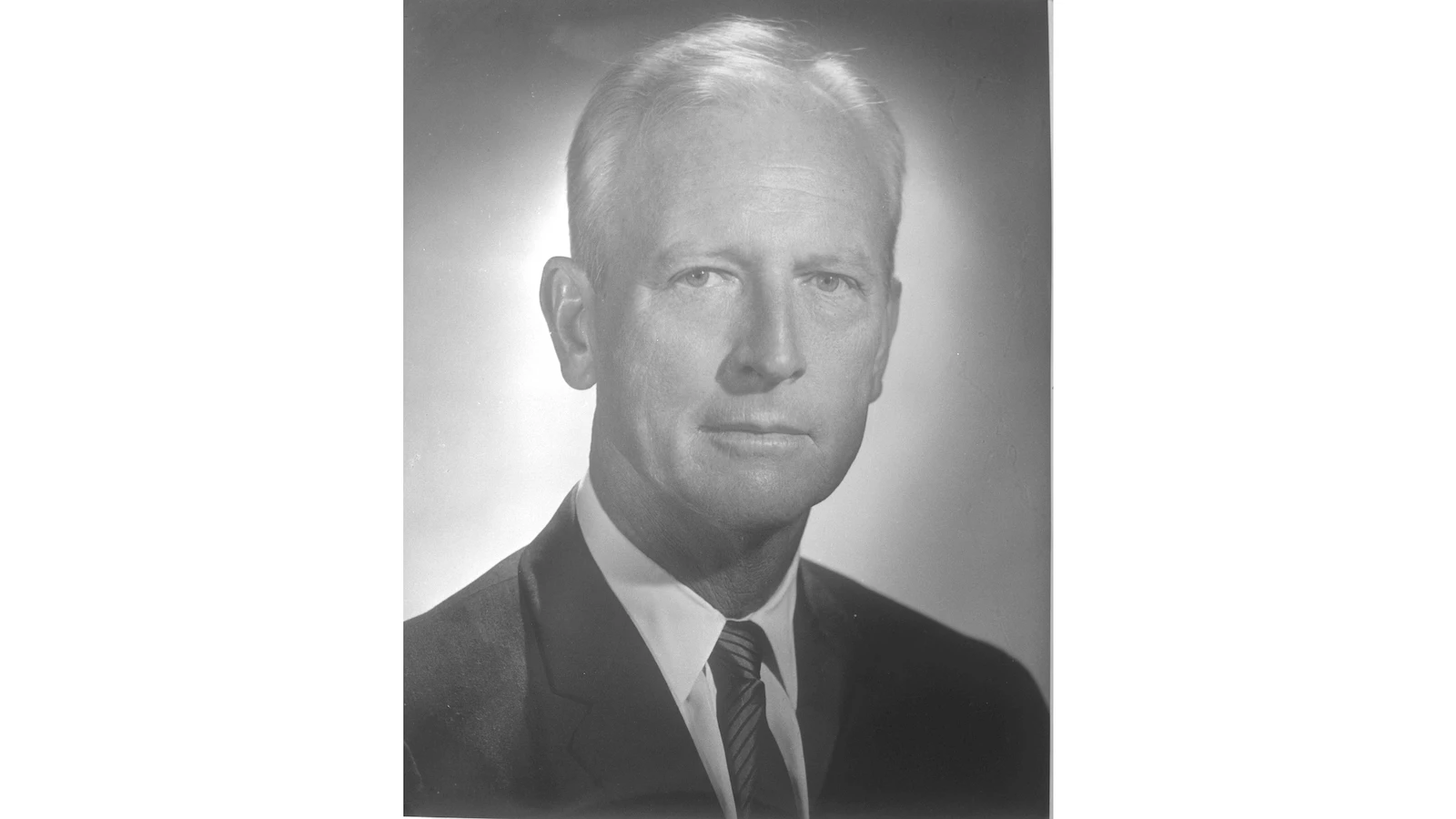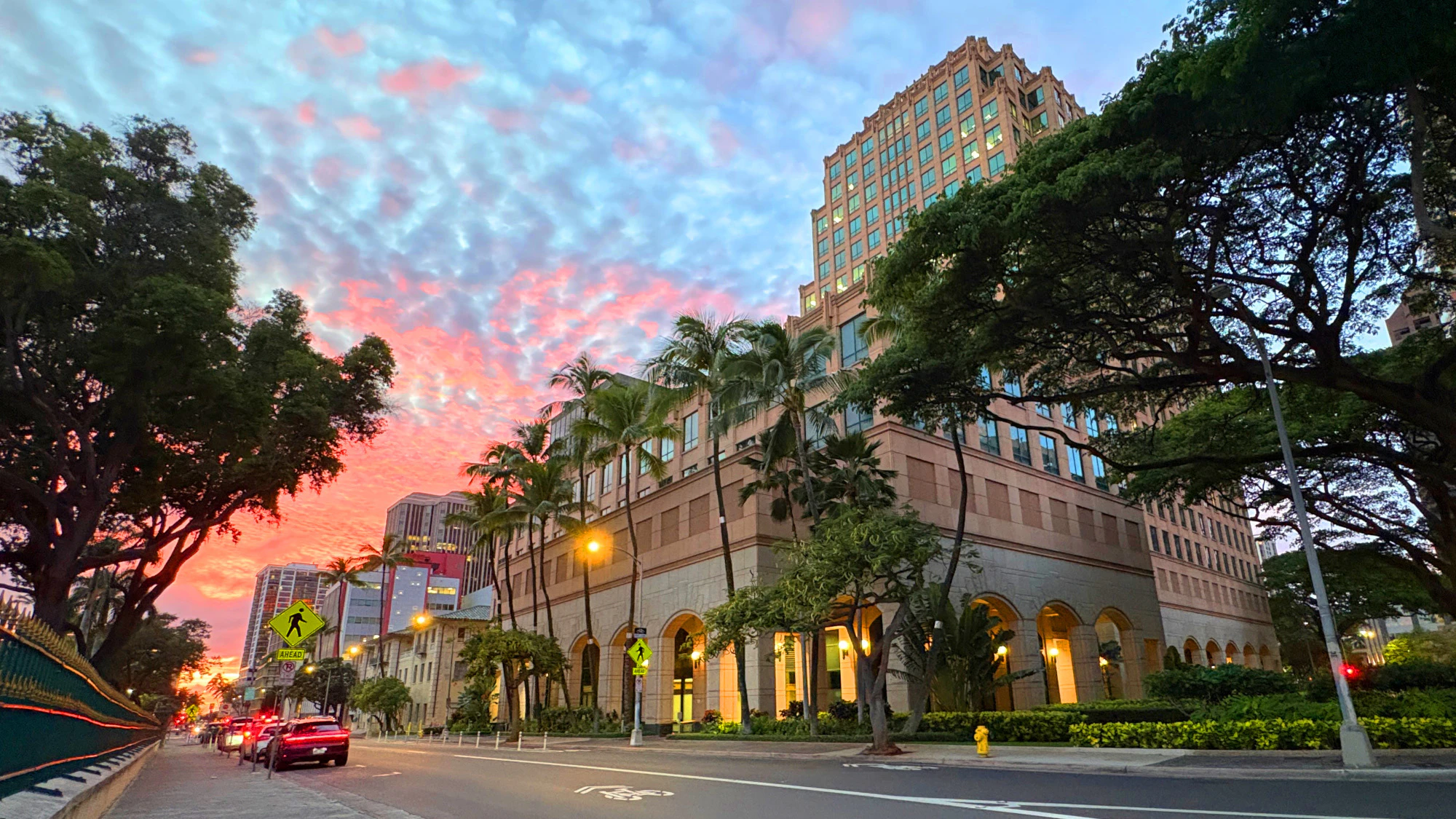If you understand a speech given by a near-forgotten and long-dead governor in 1969, you’ll arguably gain a foundational understanding of contemporary Hawai‘i.
In spite of its importance to modern Hawaiʻi’s identity, most people have never heard of this speech. It asks a timeless question of Hawai‘i’s people: Is Hawai‘i actually a dynamic, innovative society wrapped in a unique identity, or is it nothing more than a loose summary of imported ideas, systems and peoples?
On May 24, the University of Hawai‘i John A. Burns School of Medicine quietly commemorated the legacy of John A. Burns.
As speakers filed into position in Kaka‘ako, more than one speaker made reference to a phrase coined by Burns in 1969.
Burns, the second-elected governor in the state of Hawai‘i’s history, has been dead for more than 50 years. He is often regarded as one of the founders of the state of Hawai‘i, securing the passage of the Admissions Act that brought statehood in 1959.

Three years later, his election as governor in 1962 consolidated the Democratic Party’s ascension as Hawai‘i’s main party. He inaugurated the era of the “New Hawai‘i” marked by the ascendance of tourism, explosive population growth, runaway economic expansion, massive building projects, and hitherto unprecedented opportunity for hundreds of thousands of Hawai‘i-born residents.
It was also marked by increased frustration among many Native Hawaiians, whose protests against his administration’s failure to properly administer the Department of Hawaiian Homelands – among many other issues – that laid the foundation for a Hawaiian Civil Rights Movement that culminated only years after his death.
Burns played a critical role in the establishment of the East-West Center and the University of Hawai‘i Medical School, which bears his name today. He died on April 5, 1975.
It was the ‘subtle inferiority of spirit’ speech that came to define the mission of the Democratic Party – and modern Hawai‘i.
Like many of those bridges, buildings and landmarks built under his administration across the Hawaiian Islands, the speech haunts Hawai‘i.
If you try to divine Hawai‘i’s trajectory, the words will play off your mind as you see variants of Hawai‘i on Beretania Street in Honolulu, Rice Street in Lihu‘e, High Street in Wailuku, or Kīlauea Avenue in Hilo. Every county was invariably shaped by the early years of Burns’ administration.
Beyond the physical wealth and the tangible infrastructure, are we just a loose collection of islands facing the same problems? What binds these islands together?
As you walk around Hawai‘i, you’ll see that we’ve never figured out our identity.
To embrace ourselves to gain confidence
Burns worried about Hawai‘i’s identity. The lack of confidence in this identity was where Burns saw Hawai‘i’s greatest weakness.
When he addressed the Hawai‘i State Legislature in February 1969, Burns made a deliberate decision to acknowledge Hawaiʻi’s many problems without delving too greatly into his administration’s plans to deal with them.
“The problems of housing and labor shortages, of rising prices, of environmental decay, or public services lagging behind public demand, of the education of our children, of crime, of land and its use – all these continue to warrant our fullest attention today,” observed Burns. “They are neither new nor insoluble. They simply require good men and women – great men and women – who will accept the challenge they offer.”
The issues themselves were tertiary to a broader crisis in Hawaiʻi’s culture. Great men and women needed a vision for the future. They need a common purpose to inform their direction. Even with material wealth, a society without a purpose could lack direction. This could beget anxiety and apathy, resulting in a society’s decay.
“The undercurrent of uncertainty simmering beneath our affluent surface has been articulated in expressions of concern that Hawaiʻi stands in danger of losing its unique character.” So the problems required good people, arguably people who understood Hawai‘i’s identity.
Without a sense of this identity, people could never understand a society’s mission. History can shine a light on a society’s identity, becoming a source of confidence.
The speech’s message was esoteric. Burns seemed to believe that Hawai‘i was becoming a purposeless place, in spite of all its wealth and growth. There was still a deep-seated insecurity beneath the veneer of progress. Hawai‘i seemed to still fear its own uniqueness.
People were afraid to embrace themselves, take risks, and face challenges. In terms of ambition, Burns thought people in Hawai‘i could be caught thinking too small. He believed they could still afford to think bigger and bolder.
The decision to insert a particular paragraph was rhetorically decisive; his edits and additions to the remarks were still coming one hour before the speech was formally scheduled for delivery.
Nevertheless, he made a key addition. He decided to critique the very place he governed.
“To be perfectly candid,” he told a stunned audience, ”I sense among some elements of our community – particularly those who are descended from our immigrant plantation workers – a subtle ‘inferiority of spirit,’ which is totally unwarranted and which becomes for them a social and psychological handicap in life.”
These handicaps prevented people from living up to their potential. They prevented Hawai‘i from constructively treating many of its chronic challenges.
Among those watching this speech in shock was a young Honolulu Star-Bulletin reporter named Tom Coffman. “When he gave his controversial speech calling on people to forego a ‘subtle inferiority of spirit,’ I led my story with that phrase in my front-page banner,” Coffman remarked in May 2025.
“That was blunt talk,” Coffman reckoned in 1969, “and it either came home to you or it didn’t.”
The unanswered question
Burns channelled Abraham Lincoln’s then-controversial House Divided Speech on the trajectory of the United States before the American Civil War. “If we could first know where we are, and whither we are tending,” Lincoln argued, “we could then better judge what to do, and how to do it.”
If the people of Hawai‘i don’t know where they are or where they are going, then they will never be able to know what to do or how to do it. The subtle inferiority of spirit will never disappear. It will always arrest progress through paralysis, dividing people and inviting anxiety.
In real time, people in Hawai‘i are wrestling with the warnings of Burns. One recent, notable example is the Rediscovering Hawai‘i’s Soul Initiative. Convened through the Hawai‘i Executive Collaborative, the RHS initiative aims to facilitate conversations centered around a common vision for Hawai‘i’s soul. As part of this framework, “everyone on our Islands regardless of background or ethnicity – lives with island consciousness that we must live in a reciprocal relationship with all living things: the ‘āina, the ocean, the sky, the kānaka who originated from the islands, and the immigrant and people who call Hawai‘i home.”
If we want people to see Hawai‘i as a place capable of uniqueness, Burns’ speech should be taught in every school in Hawai‘i as part of any course on Hawai‘i’s history.
His message takes on a heightened importance in a more American Hawai‘i. Highways constructed in the ’60s have enabled the construction of American-style suburbs, graced with American fast-food joints and strip malls. Pidgin has evaporated in communities. Children grow up watching American television, absorbing American social media and rooting for professional sports teams based in cities like San Francisco, New York, or Las Vegas. Perhaps we are gradually acculturated to see Hawai‘i as but a novel part of the broader country.
According to March 2018 estimates, nearly half of all residents were not born in Hawai‘i. Some, like me, were born in the continental U.S. Even if we are raised in public schools filled with all aspects of Hawai‘i’s nuance, we may not necessarily see Hawai‘i as a unique place. We can overcome this inferiority by striving to know ourselves. Once we know ourselves, then maybe we can talk about the future with an iron self-confidence grounded in self-awareness.
Until we know ourselves, however, we’ll never know.
For the latest news of Hawai‘i, sign up here for our free Daily Edition newsletter.





